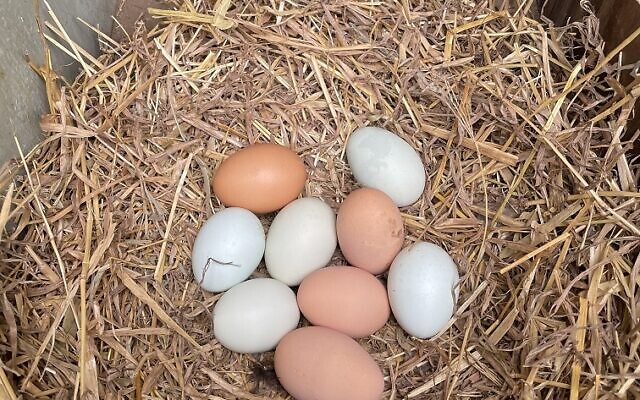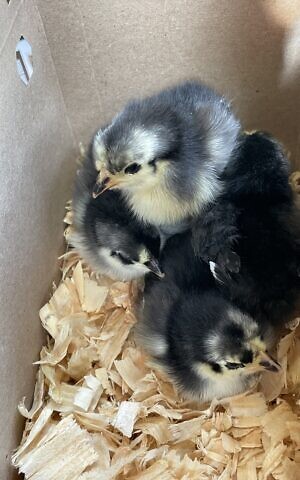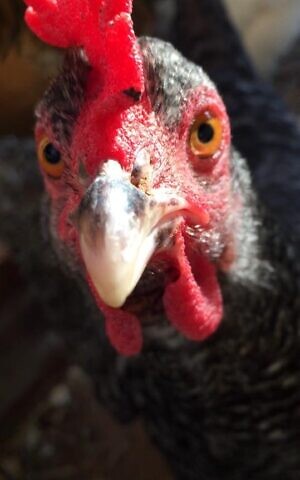No More Buying Eggs: Raise Chickens
Raising personal chickens has become a fascinating, growing trend.
Chana Shapiro is an educator, writer, editor and illustrator whose work has appeared in journals, newspapers and magazines. She is a regular contributor to the AJT.
An increasing number of people raise chickens in order to produce eggs at home.
Andrew Gurvey, an experienced do-it-yourselfer, is one of them. Gurvey, a lacto-vegetarian, had already experimented with aquaponics, raising tilapia in tanks in his garage; Gurvey claims that the fish seldom jumped out. In 2017, he decided to expand his food independence by buying a few chickens to produce eggs. “I wanted to raise my own food,” he explains.
He built a well-ventilated chicken coop from scratch in his back yard, equipping it with a roosting area, nesting boxes, and a food and water area. There is a chicken run in the large yard, within a fenced 8’ x 12’ area where chickens meander freely under a chicken wire canopy which keeps out flying predators like owls and hawks.

“Possums, foxes, and raccoons occasionally find their way into the fenced area,” Gurvey notes, “and I have found my chickens in bushes and even trees, where they flew to escape danger.”
Once in a while, chickens will get out of the fenced area to explore Gurvey’s front yard and wander around his vegetable garden; however, the hens don’t go far, and most of them meander back to their fenced-in home by themselves.
Chickens are natural roosting fowl, but they don’t always get along with one another. When Gurvey is aware of a bullying, troublesome hen which pecks menacingly at her coopmates, he uses “pinless peepers,” opaque blinders that attach to the chicken’s upper beak.
“Chickens only peck at other chickens they can see. The pinless peepers allow them to see only from the side,” he explains.
Gurvey occasionally purchases organic feed from local businesses, like Atlanta’s Standard Seed and Feed Store, where one can also buy chicks. There’s no dearth of local breeders who sell chicks, and chicks can even be shipped overnight. Gurvey mentions a popular website, mypetchickens.com, for this transaction.
Presently, Gurvey is limiting the number of chickens he’s raising. Last year, he had a surfeit of eggs, and he ended up giving them to friends and bringing them to share at work.

Eggs are a controversial food item, and whereas, formerly, we were advised to eat eggs only sparingly because of the cholesterol content in the yolks, newer information from the Mayo Clinic and The American Heart Association, citing 2015 studies from The United States Department of Agriculture, laud the nutritional value of eggs. Nutritionally, eggs are loaded with vitamins and minerals, are packed with protein, and have only 75 calories. Additionally, eggs contain potassium and choline (an essential element in metabolism) and are excellent sources of vitamins A, D, and B-12, according to the CDC and NIH websites.
Whereas people may prefer to eat only egg whites, which do provide nutrition but don’t possess cholesterol, most healthy people (without heart conditions and other medical concerns) can eat whole eggs with yolks. Yolks supply lutein and zeaxanthin, which reduce the risk of cataracts and macular degeneration, according to a 2015 study by the American Heart Association.

Raising chickens for their eggs offers more than nutrition: there is a clear monetary benefit. Egg-laying hens can thrive on left-over bread and vegetable and fruit scraps from the kitchen, even without organic feed that is purchased, relieving their owners of cash outlay to feed them.
“I mix the organic feed I buy with table scraps from the kitchen, so I tell people that my hens lay eggs that are semi-organic,” quips Gurvey.
But are all chickens equal? Egg maven Gurvey says, “The most prolific layers produce white or brown eggs, which taste the same and are grouped in the same sizes; however, some breeds lay eggs of other colors, including blue or green. There is one breed with 40-pound hens, the size of dogs. Their eggs are really big!”
Chicks are a worthwhile investment. They cost from $2 to $40 each (depending on beauty, rarity, or heritage breed) and begin laying eggs at about a year old. Healthy hens can continue to lay eggs for five to 10 years, with their peak production in the first two years. Theoretically, hens lay eggs every 24 -27 hours, but, depending on the season, they will not lay eggs every day. Gurvey estimates that last year his hens laid eggs about 240 out of 365 days.
“Chickens are influenced by the amount of light they experience, and they lay more eggs on bright, sunny days,” he explains. Gurvey opens his henhouse in the early morning and, when his chickens are rounded up at the end of the day, he closes it when it gets dark.

Chickens lay eggs even if there is no rooster around; therefore, the un-roostered eggs that hens lay are not fertilized, meaning that the eggs they lay will not result in viable chicks. If a flock does have a rooster, eggs need to be collected daily, removed from the nesting boxes, and kept in a cool place before being used, so that they won’t develop into chicks. Otherwise, a hen will nest with her eggs and produce chicks. The chicken’s owner subsequently ends up raising lots of chicks from the fertilized eggs. Some of those chicks will become roosters, thereby perpetuating the fertilized egg cycle and even cause unrest in the flock.
Here’s a note for people who keep kosher. Eggs are pareve and can be eaten with either a dairy or meat meal. Kosher cooks do not use eggs with bloodspots; it’s fortunate, therefore, that supermarkets—where most kosher cooks buy eggs—do not sell fertilized eggs (the blood spot is the indicator of fertilization).




comments